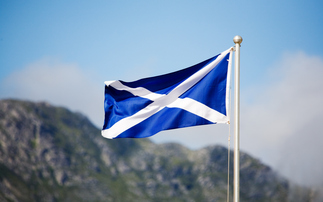PwC's climate team welcomes an historic climate deal, but warns much work is now needed to turn an international agreement into national action
To a standing ovation and some tears of joy, all governments adopted the Paris Agreement on Saturday night. The deal is more substantial and, with a 1.5C temperature goal, more ambitious than many expected. Action at the international and national level will be mutually reinforcing as the deal establishes a process for review and continual improvement. But the level of cooperation between countries shown here in Paris is a mere glimmer of what will be required to meet their collective ambition. And as the Kyoto Protocol shows, success in Paris doesn't guarantee a successful deal. A successful deal doesn't guarantee a successful outcome - the agreement now needs to be ratified and implemented by all countries and this is where business will play a fundamental role.
The business end of the deal
Suggesting that fossil fuel companies' share prices will fall on Monday or that the deal is a shot of adrenaline in the arm of the carbon market would be very quotable, but almost certainly wrong. The immediate implications for business haven't changed over the weekend and the Agreement is highly unlikely to move markets in the short term. For business, the sharp end of the Agreement is in the national plans or INDCs*. We analysed the major ones in our Low Carbon Economy Index, which signal to business a step change in effort to tackle emissions at the national level. On average countries will need to more than double the rate of reduction in the carbon intensity of their economies in order to achieve their targets.
The INDCs describe how countries will increasingly put pressure on coal investments whether through emissions or efficiency standards, taxes or cap-and-trade programmes. Countries also outline how they will support investment in renewables, biofuels and other low carbon infrastructure. The INDCs imply huge shifts in financial flows towards low carbon development and governments now need to think seriously about how they and the private sector can achieve this.
Carbon pricing deliberately changes the economics of fossil fuel consumption for the worse. So the Paris Agreement (and national actions to achieve it) should in theory erode the value of carbon intensive businesses and enhance the value of low carbon investment over the medium and longer term. If it doesn't, many will argue it hasn't worked. Many governments' 'to do' lists now include adding the specifics to the regulations and other actions needed at the national level to achieve their targets.
Clear signal or ambiguous noise?
The tricky issues over the two weeks of negotiations were the long term goal, finance, the review process for national action, and loss and damage. How to differentiate the responsibilities and actions of countries cut across these issues and added complexity to the talks. There is constructive ambiguity, or woolly wording, in many areas, but as COP21 President Laurent Fabius said, this allows all countries the ability to take the deal home and declare success.
Some have suggested that the Paris Agreement signals the start of the low carbon revolution. The INDCs definitely are a step change from business as usual. The global average three per cent reduction rate they imply is roughly what the UK or France has achieved since 2000 - hardly revolutionary, but pretty significant if achieved by all countries. So the Paris Agreement is the first of many steps in the right direction. There's been enough discussion lately; it's time for action.
The Agreement and the Decisions
The deal is split into the Agreement, broadly setting out what countries want to achieve, and the COP Decisions, which introduce the Agreement and explain how to put it into effect. The wording leaves aspects of it open to interpretation and will take time to digest, particularly when it comes to differentiation. Here is a brief overview and instant reaction to some of the main Articles:
Purpose & objective - one of the more surprising outcomes of the Agreement is that it raises global ambition by aiming to limit warming to 1.5C. The exact wording in Article 2 is: "This Agreement... aims to strengthen the global response to the threat of climate change by... holding the increase in the global average temperature to well below 2C... and to pursue efforts to limit the temperature increase to 1.5C above pre-industrial levels". The 1.5C goal was a particularly emotive topic during the two week summit. The reactions to it ranged from critical to it is critical. The goal is totemic for Least Developed Countries (LDCs) and vulnerable Small Island Developing States (SIDS) which had fought for its inclusion for many months. Doing so should increase pressure on countries to ratchet up their targets in future.
Others suggested that it was a helpful negotiating tactic which split the bloc of developing countries and that the goal has no practical implications as it does not link with either a global long-term emissions goal or the national mitigation targets. Many think that the 1.5C goal is so challenging it actually undermines the credibility of the deal. Our LCEI chart (below) shows the huge gap between current progress and the 2C goal - and the INDCs only filling part of that gap. The 1.5C goal is even more ambitious and would require unprecedented rates of low carbon infrastructure deployment including carbon capture and storage, global cooperation, and revolutions in land management.
Mitigation - Article 3 of the Agreement formally recognises the nationally determined contributions and states the need for progression over time. There is no quantitative long term goal in Article 4, but countries should aim to reach global peaking of emissions ASAP and rapidly reduce emissions afterwards, reaching net zero emissions by 2100**. Article 4 also sets out the process for five-yearly reporting on national action and reviewing collective progress and raising ambition. The first review will take place in 2023 (referred to as the 'global stocktake' in Article 14).
REDD - The Coalition for Rainforest Nations finally have their approach to reducing emissions from deforestation and forest degradation (REDD+) recognised in Article 5 of the Agreement. Having agreed rules to address leakage and safeguards for indigenous peoples in the past, supporters of REDD+ demanded its inclusion in the Agreement.
International Emissions Trading - Article 6 describes how countries can pursue voluntary cooperation in the implementation of their nationally determined contributions, or in other words trade emissions. The Article also establishes a new sustainable development mechanism which resembles Kyoto's Clean Development Mechanism. It also describes how countries shall ensure the environmental integrity of transfers and apply robust accounting. All of this was advocated by the business community who celebrated the adoption of Article 6 with many of the negotiators who focused on that part of the Agreement.
Even carbon pricing got a mention in the deal (in the Decisions) which: also recognizes the important role of providing incentives for emission reduction activities, including tools such as domestic policies and carbon pricing. For some reason, this is set out in the section on Non-Party Stakeholders which also welcomes the efforts of civil society, cities, the private sector and sub-national authorities. There is no explicit mention of the private sector in the preamble of the agreement, which is referred to obliquely as 'various actors'.
Adaptation; loss and damage - The Kyoto Protocol was once described as a mitigation agreement. This time in Paris, countries included as much detail on adaptation, and loss and damage, (Articles 7 and 8) as in the mitigation articles. On loss and damage, there was clearly a compromise. In exchange for agreeing (in the Decision) that it does not involve any liability or compensation, the Least Developed Countries achieved recognition of this concept in a separate article (8) in the Agreement. However the requirements on countries to take action or provide support to particularly climate vulnerable nations is weaker than they may have hoped.
Finance - Article 9 states that developed countries shall provide financial resources to developing countries for both adaptation and mitigation. Other countries (i.e. the emerging economies) are also encouraged to, or continue to, do so. This section refers to mobilization of climate finance from a wide variety of sources and the progression beyond previous efforts. Furthermore, developed countries should report on this climate finance every two years and the review of national mitigation actions shall take into account these finance flows. The mobilization will continue through to 2025 and the collective goal should rise from a floor of $100bn per year.
Differentiation - The division of responsibilities and actions of countries is described in many aspects of the agreement. It was a particularly challenging issue to tackle in the facilitated groups that focused on individual articles. Notably, there is no mention of the 1992 Convention's Annex 1 (developed countries) or non-Annex 1 in the Paris Agreement.
But throughout the Agreement there are references to developed and developing country Parties, and specific references to the special circumstance of LDCs and small island developing states (SIDS). For example, in the mitigation section Developed country Parties shall continue taking the lead. In the finance section Developed country Parties shall provide financial resources to assist developing country Parties. Other areas refer to Parties or each Party or changing national circumstances which all blur the distinction between the old definitions of developed and developing. For example: Other Parties are encouraged to provide or continue to provide such (financial) support voluntarily.
It remains to be seen whether this language truly breaks down the binary division between countries. Differentiation between developed and developing countries may be in the eye of the beholder. The disadvantage of the woolly wording is that both supporters and detractors of the deal can still argue it either way when it comes to differentiation.
Other articles in the Agreement address technology transfer, capacity building, the global review process, compliance, entry into force and the governing and subsidiary bodies of the Agreement.
*The Intended Nationally Determined Contributions (INDCs) firmed up in Paris and are no longer intended so they are now known simply as NDCs.
**‘net zero by 2100' are not the actual words. They are: to achieve a balance between anthropogenic emissions by sources and removals by sinks of greenhouse gases in the second half of this century
For our latest updates follow us @pwcclimateready or others in PwC's COP team including: Jonathan Grant (@JG_climate), Celine Herweijer (@CHerweijer), Lit Ping Low (@litping), Kiran Sura (@KiranSura_x), and Jon Williams (@jonwilliamspwc)
This article is part of BusinessGreen's Road to Paris hub, hosted in association with PwC.








